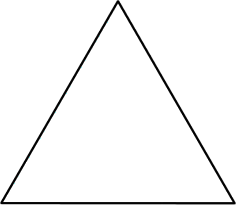09 SEP 2011 by ideonexus
 An Ancient Observation of Life from Lifelessness.
An Ancient Observation of Life from Lifelessness.
Nature proceeds little by little from things lifeless to animal life in such a way that it is impossible to determine the exact line of demarcation, nor on which side thereof an intermediate form should lie. Thus, next after lifeless things comes the plant, and of plants one will differ from another as to its amount of apparent vitality; and, in a word, the whole genus of plants, whilst it is devoid of life as compared with an animal, is endowed with life as compared with other corporeal enti...From Aristotle's "History of Animals". From mineral to plant to animal; this could be seen as an early view of evolution.
31 MAY 2011 by ideonexus
 Movement According to Aristotle
Movement According to Aristotle
241b 34 Every moving thing must be moved by something. For if it does not have the source of its motion in itself, it is clear that it is moved by something else (for another 40 thing will be the mover); but if it is in itself, let AB be taken, which is moving in its own right, and not by means of some part of it being moved. First, then, to suppose that AB is moved by itself since the whole is moved and by nothing outside it,would be as if, when KL was moving LM and was itself moving, one we...Chains of events put into a basic logic. There are the beginnings of understanding here, but he doesn't know how to break it down properly.
19 MAY 2011 by ideonexus
 The Taung Child's Horrible Demise
The Taung Child's Horrible Demise
The
first Australopithecine to be discovered, and the type specimen of the genus, was the so-called
Taung Child. At the age of three and a half the Taung Child was eaten by an eagle. The evidence is
that damage marks to the eye sockets of the fossil are identical to marks made by modern eagles on
modern monkeys as they rip out their eyes. Poor little Taung Child, shrieking on the wind as you
were borne aloft by the aquiline fury, you would have found no comfort in your destined fame, two
and ...Killed by a bird of prey.
15 APR 2011 by ideonexus
 Rules in Science and the Loss of the Brontosaurus
Rules in Science and the Loss of the Brontosaurus
A hundred years earlier, a very popular dinosaur mistakenly got named twice. The first time it was called "Apatosaurus" or "deceptive lizard" and nobody much cared, because the name was dull and the fossil wasn't all that spectacular, but later discoveries were more dramatic and looked different enough that scientists mistakenly thought they'd found a new dinosaur. They called it "Brontosaurus" (meaning "thunder lizard").
Brontosaurus stuck, in part because of the cool name, plus the Sinclai...Folksonomies: science facts science culture
Folksonomies: science facts science culture
The story of the Apatosaurus and the Brontosaurus and how one was lost as a dinosaur because of some, fabled "rule" of science. Are there really rules of science? Aren't they just cultural conventions of scientists? Why not adhere to broader cultural norms?




